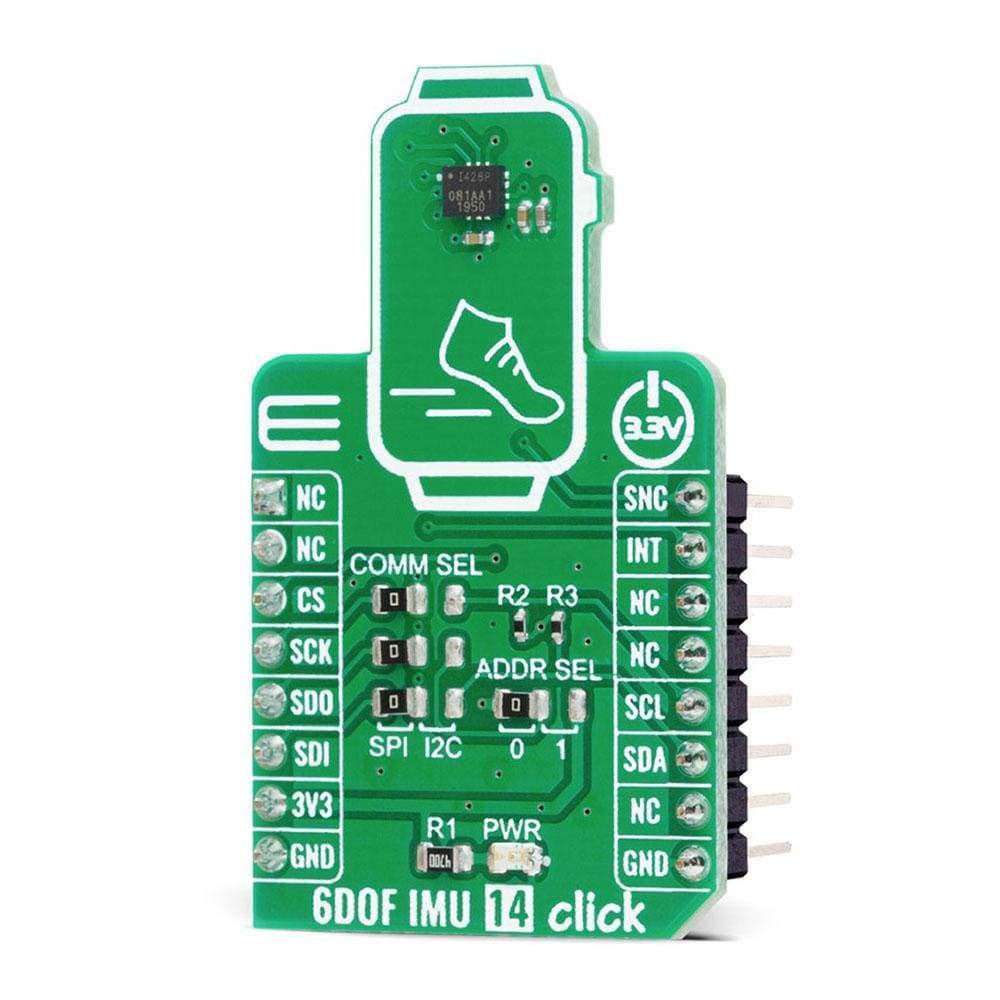
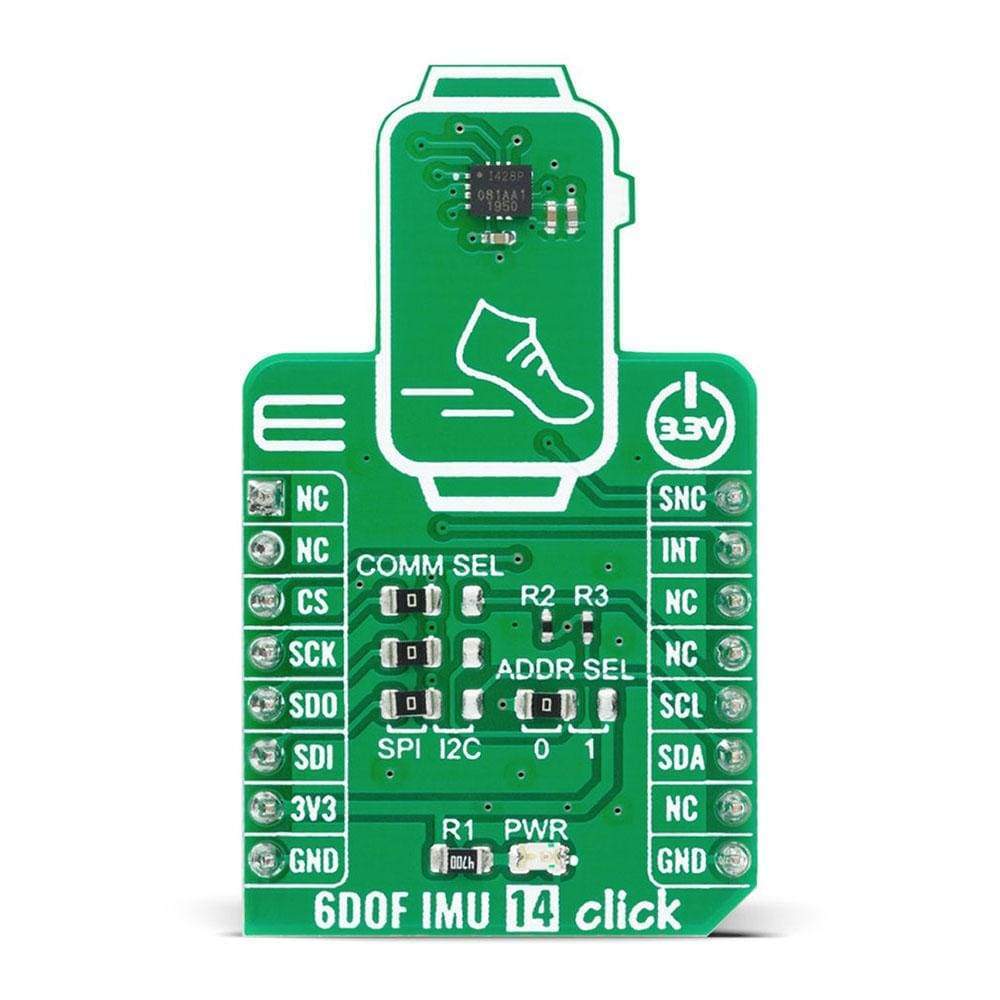
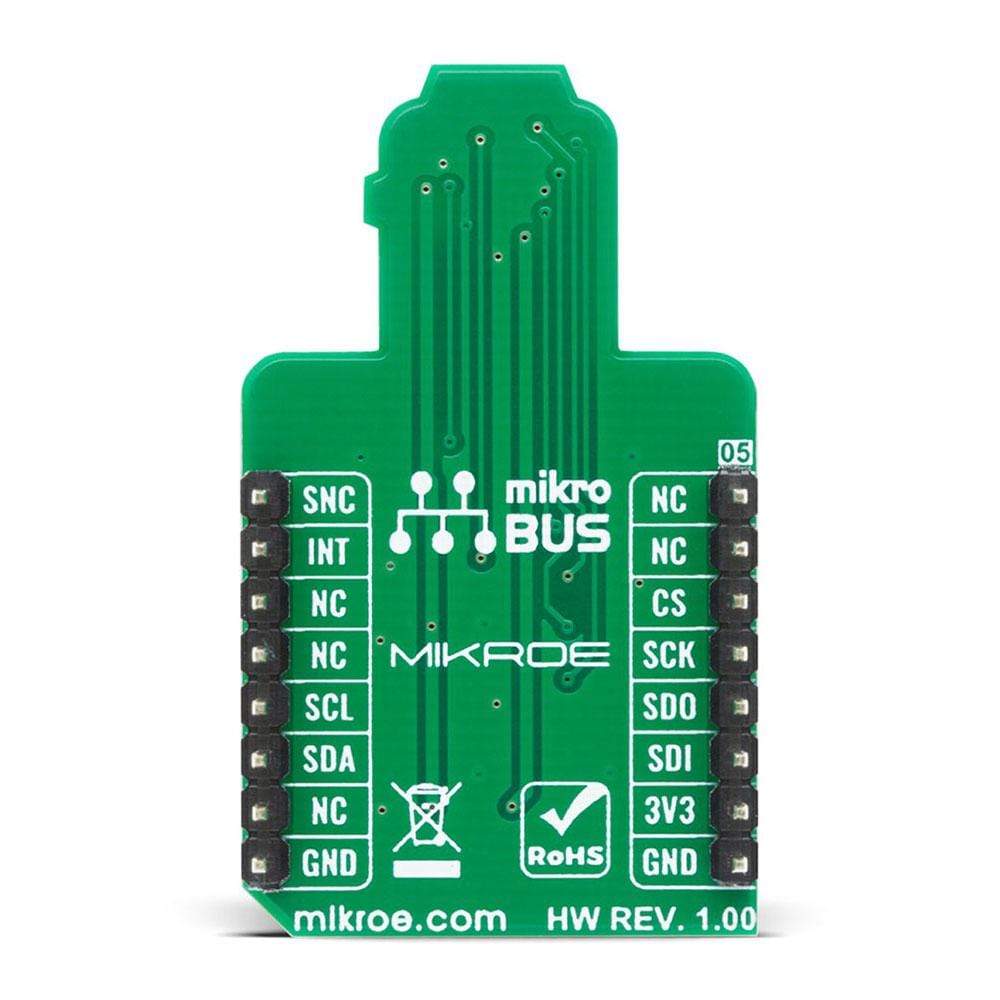
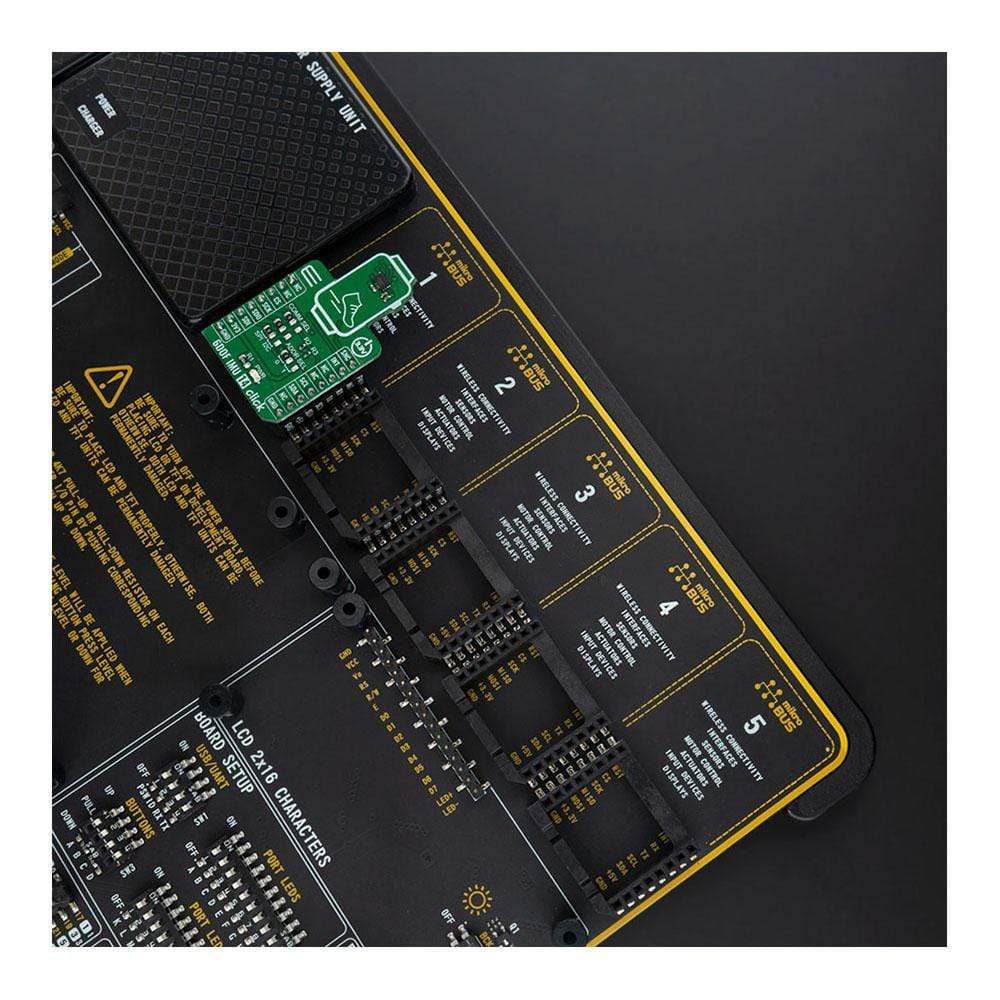
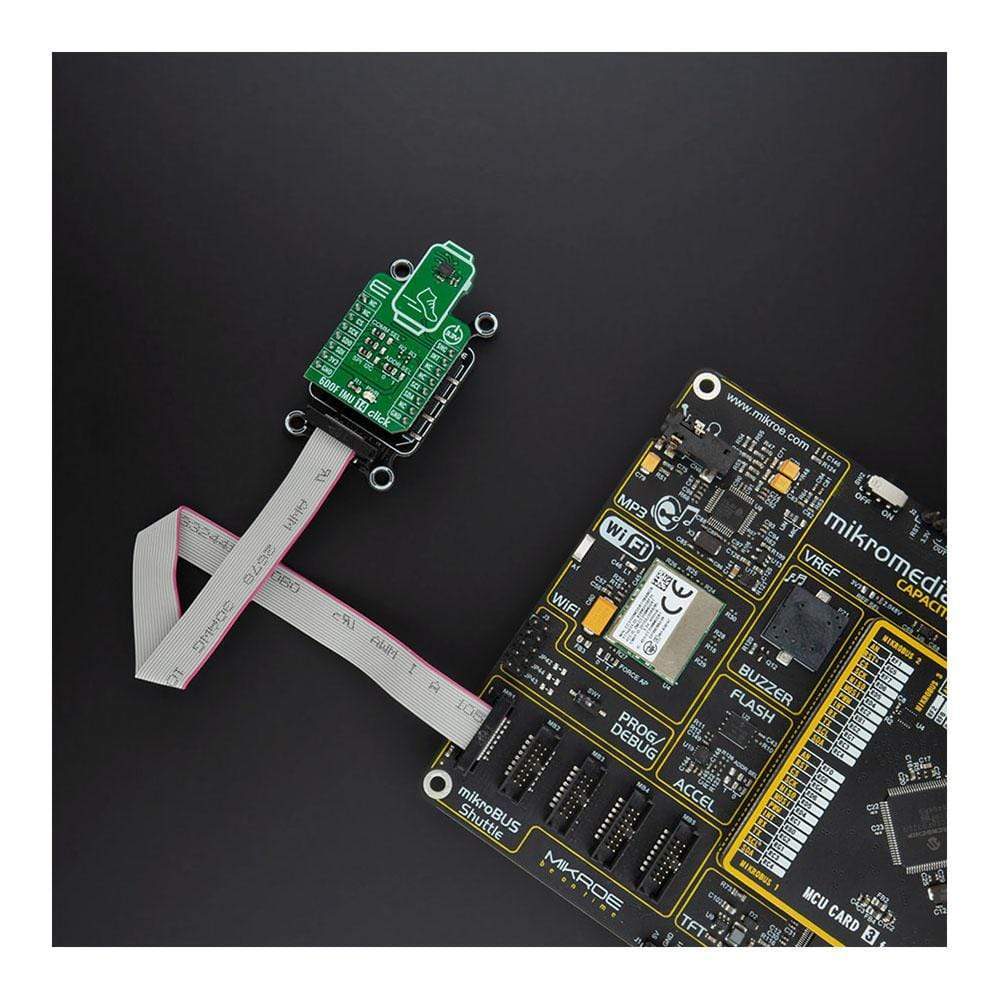
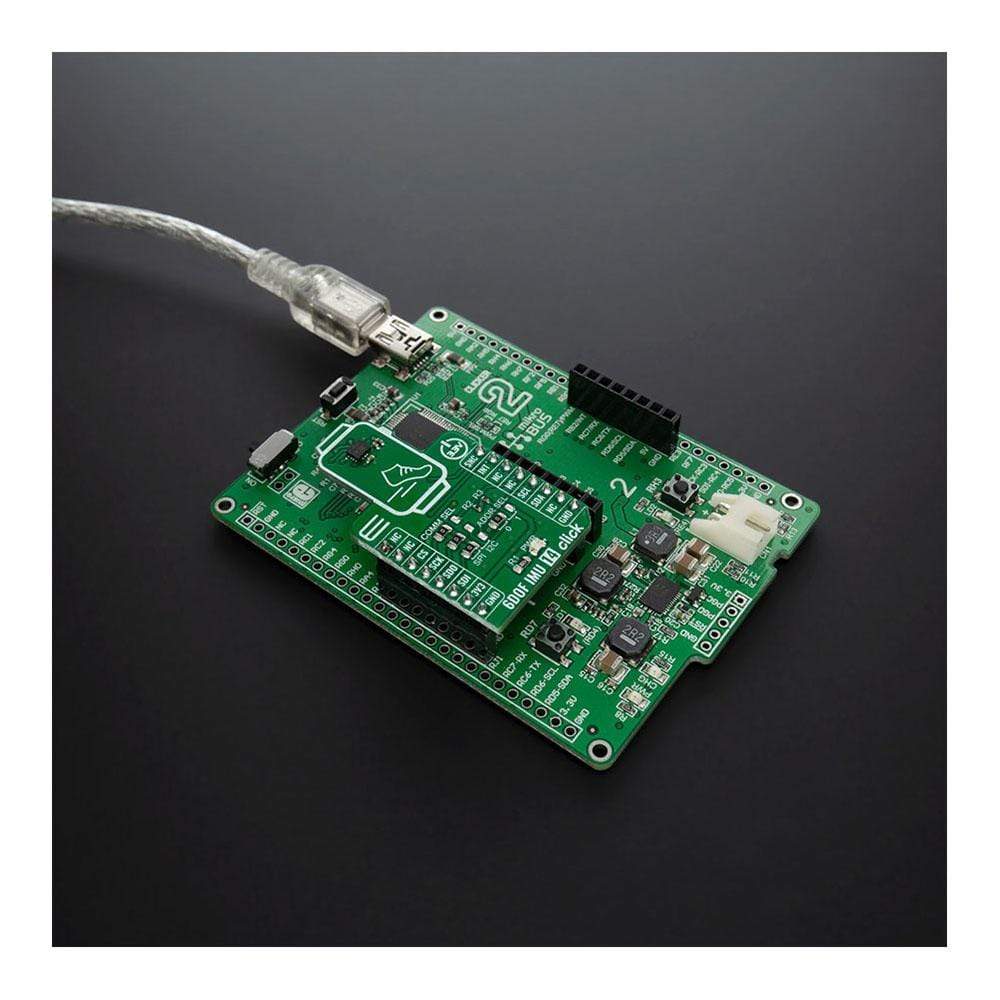
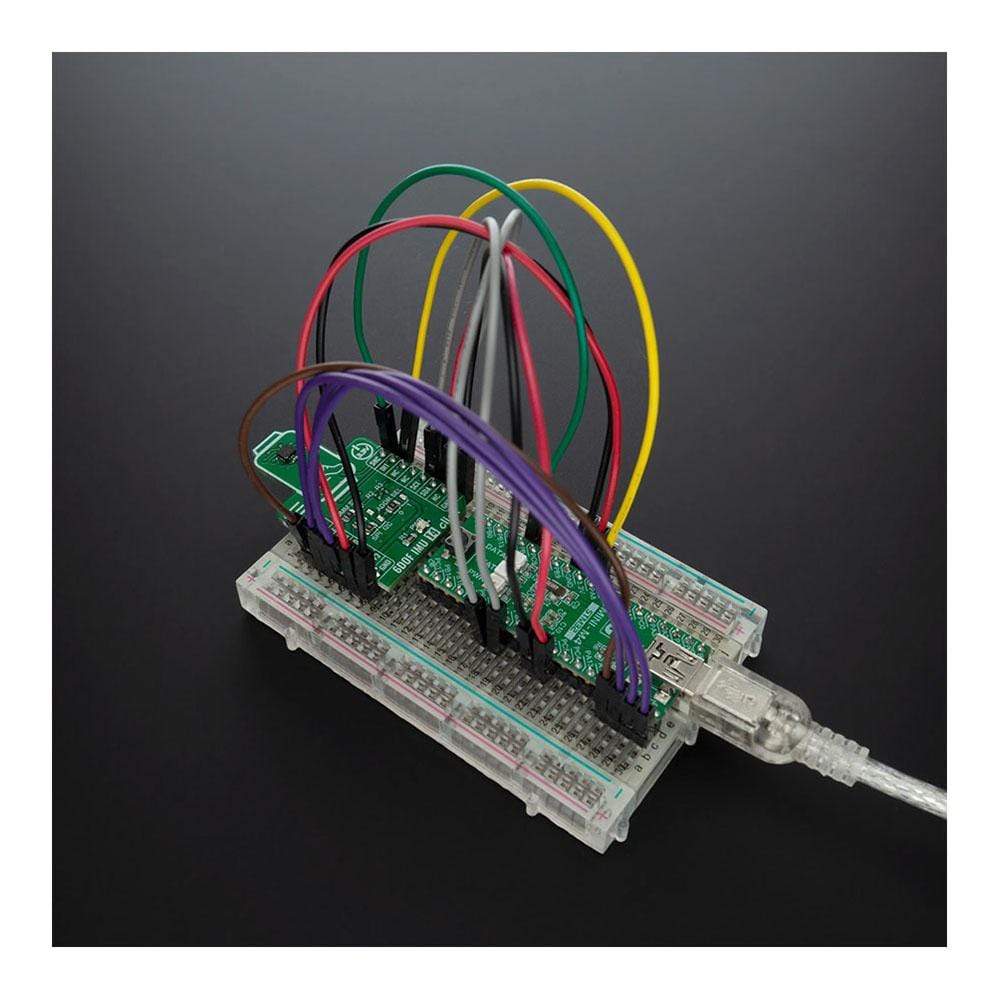
Overview
The 6DOF IMU 14 Click Board™ is a compact add-on board that contains a 6-axis MEMS motion tracking device combining a 3-axis gyroscope and a 3-axis accelerometer. This board features the ICM-42688-P, high precision 6-axis MEMS motion tracking device, from TDK InvenSense. It has a configurable host interface that supports both I2C and SPI serial communication, features a 2 kB FIFO and 2 programmable interrupts with ultra-low-power Wake-on-Motion support to minimize system power consumption. This Click Board™ is an excellent choice for applications like gesture recognition, activity classification, and pedometer, along with programmable digital filters, and an embedded temperature sensor.
The 6DOF IMU 14 Click is supported by a mikroSDK compliant library, which includes functions that simplify software development. This Click Board™ comes as a fully tested product, ready to be used on a system equipped with the mikroBUS™ socket.
Downloads
La carte Click Board™ 6DOF IMU 14 est une carte complémentaire compacte qui contient un dispositif de suivi de mouvement MEMS à 6 axes combinant un gyroscope à 3 axes et un accéléromètre à 3 axes. Cette carte est équipée du dispositif de suivi de mouvement MEMS à 6 axes de haute précision ICM-42688-P, de TDK InvenSense. Elle dispose d'une interface hôte configurable qui prend en charge les communications série I2C et SPI, d'un FIFO de 2 Ko et de 2 interruptions programmables avec prise en charge Wake-on-Motion à très faible consommation d'énergie pour minimiser la consommation d'énergie du système. Cette carte Click Board™ est un excellent choix pour des applications telles que la reconnaissance des gestes, la classification des activités et le podomètre, ainsi que des filtres numériques programmables et un capteur de température intégré.
L' IMU 6DOF 14 Click est pris en charge par une bibliothèque compatible mikroSDK, qui comprend des fonctions qui simplifient le développement logiciel. Cette Click Board™ est un produit entièrement testé, prêt à être utilisé sur un système équipé du socket mikroBUS™.
| General Information | |
|---|---|
Part Number (SKU) |
MIKROE-4237
|
Manufacturer |
|
| Physical and Mechanical | |
Weight |
0.019 kg
|
| Other | |
Country of Origin |
|
HS Code Customs Tariff code
|
|
EAN |
8606027380273
|
Warranty |
|
Frequently Asked Questions
Have a Question?
Be the first to ask a question about this.







